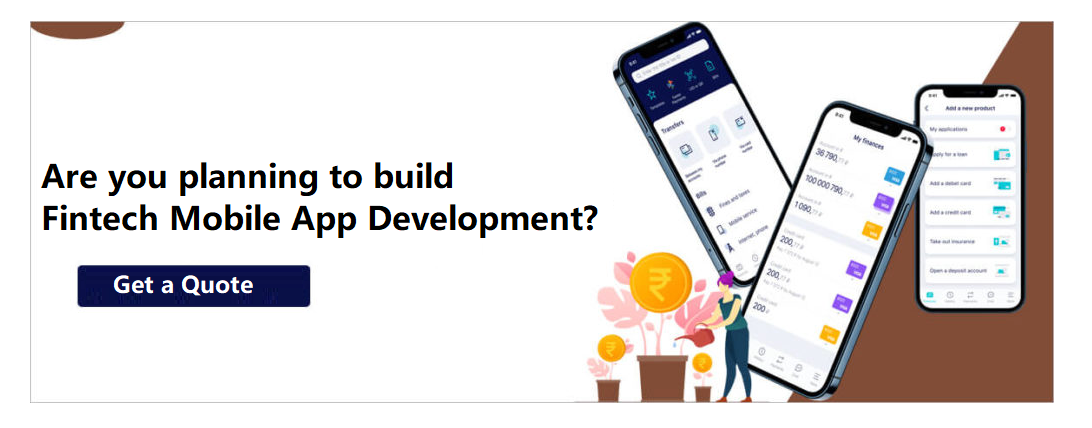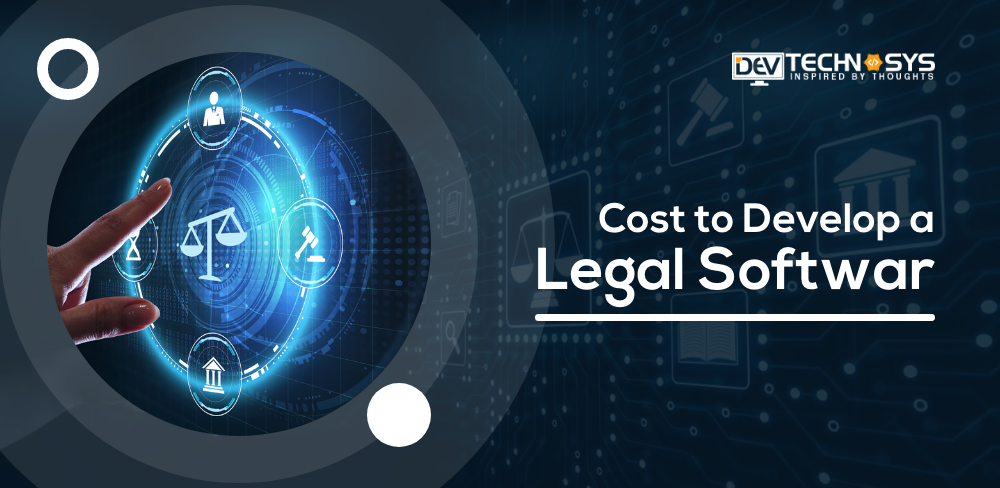Fintech’s digital transformation is now complete. What comes next is innovation and acceleration. In 2023, global economic uncertainty, fierce market competition, increasing data security threats, and consumer demands will all influence fintech strategies.
Fintech adopts technologies for a variety of purposes. Some FinTech Trends, such as the use of data-driven platforms, are gaining popularity because they can increase performance. Like risk management technology, others are being used to reduce threats, cut costs, and deal with increasing data security complexity.
On the one hand, AI-driven hyper-personalized customer experiences are giving companies a fighting shot in a market that is becoming increasingly saturated. Meanwhile, leading global institutions have begun to deploy quantum computers to get an early start on the future.
Let’s look at the fintech trends for 2023.
Table of Contents
Fintech Market: 2023 Forecasts
- With a total value of transactions of US$112,90bn, the digital investment market will be the largest in 2023.
- The average value of transactions per user in the digital investing market will reach US$439,80 in 2023.
- In 2024, digital assets are anticipated to expand by 33.6% yearly.
- 48 billion consumers are anticipated in the digital payments market by 2027.
- By 2023, the Digital Investment segment’s total transaction value will be US$112,90bn.
- The key performance indicators (KPIs) for FinTech products range significantly from one another. For example, the kind of initial loan volume for Alternative Lending differs from Assets Under Management for Robo-Advisors. Therefore, the total worth of transactions across all segments cannot be determined.
- More than 57% of individuals will be paying their bills digitally via card, phone, or Internet in 2022, according to the World Bank—industry outlook for Fintech.
- In 2022, 36% of the global FinTech market was in North America. The rising usage of ecommerce platforms was to blame for this. By 2022, e-commerce will be adopted in North America at a rate of 71.5%.
Fintech Trends of 2023
Here we have compiled the most popular finTech trends that are doing great and ruling the market. So let’s begin.
1. Digital Banking for All
In Spain, the middle class is leading in digital banking adoption. Between 2018 and 2020, online banking customers grew from 10% to a whopping 15%, a 44% increase!
Online banking is gaining popularity due to the growing demand for convenient and secure financial services. Young consumers prefer it to traditional banks.
It’s safe that the number of accounts in these digital banks will increase by 2023. These banks offer attractive features for young people, including no monthly minimum balance and no account fees.
China has a lot of customers for its WeBank digital-only bank. Brazil’s equivalent to Nubank is Ally Bank in the US and ING Bank Global. Like other banks today, they make an effort to make their offerings as accessible as feasible.
FinTech apps can be created in a rapidly changing industry, even with the rise of digital-only banks. You can create innovative solutions for users by integrating new technologies and identifying the gaps with the right mobile app development company.
2. RegTech, SupTech&InsurTech
FinTech is a market that will be dominated by RegTech, SupTech, and InsurTech in 2023. These cutting-edge technologies are essential to help financial technology companies meet regulatory requirements, support financial institutions’ supervision, and support the insurance industry.
RegTech is a technology-based approach to regulatory and compliance management in the financial sector. It will be essential for reporting, monitoring, and compliance in 2023. It will also play a key role in AI governance as new technologies are developed, and global compliance standards are redefined.
The finTech trends also ensure that businesses follow the latest regulations on compliance, such as AI rules. SupTech is the term for the application of technology, including AI and machine learning, to help the supervision of various regulatory procedures within the banking sector.
SupTech innovation is expected to continue to grow in 2023, as it will help organizations develop multi-layer data-driven approaches to meet their regulatory and compliance needs in ways that improve the efficiency of their people, processes, and IT infrastructure.
SupTech operationalization will benefit not only business analysis but also develop mapping and monitoring strategies in non-conventional markets.
3. Cashless Payments & Embedded Finance
FinTech is becoming increasingly popular. Financial services are incorporated into other goods and services in this process. It can be anything from lending money to small businesses to offering mobile banking to consumers.
This includes the popular Buy-Now Pay-Later (BNPL) option. Embedded FinanceFinance is the integration of financial services or tools into the offerings of non-financial institutions. The embedded finance ecosystem is vast. Due to the rising trend for cashless payments, you must also invest and build mobile payment apps like cash app for your business expansion.
The embedded finance ecosystem has grown alongside the realm of Banking as a Service (BaaS), which covers financial services like banking, credit, and investment. Additionally, it has widened its scope to include related industries like insurance and payment processing.
4. Green Finance
Sustainability is not just a buzzword. It’s an important global business priority. Green FinanceFinance is becoming one of the popular finTech trends. It’s a practice that focuses on the interaction between financial and environmental activities.
The terms “green finance” and “sustainable finance” are all variations on the theme of ethical investing. Green FinanceFinance recognizes that economic stability depends on environmental stability and that modern financial policies must strive to minimize environmental impacts for environmental health and economic success.
Green FinanceFinance also involves:
- Managing environmental risks.
- Future-proofing organizational strategies.
- Aligning products and services, such as loans and investments, with environmental sustainability.
5. Advanced Cybersecurity
Cybersecurity is one of the most important FinTech trends in 2023. Banks and other financial institutions need to protect their systems and data as cyber threats get more sophisticated.
Banks are using advanced cybersecurity to combat this problem. Biometric authentication, AI fraud prevention, and behavior analytics are some of the measures that banks use to combat this challenge.
These technologies can aid banks in defending their computer systems and consumer data against online threats. So, if you also want to integrate this technology into your fintech app, then you must hire dedicated developers.
Banks are employing blockchain technology to protect financial transactions and lower the danger of cyberattacks. This technology can secure financial transactions and reduce the risk of cyber-attacks.
6. Stablecoins
The use of blockchain technology is growing. There are now more than 80 million users of the technology worldwide. In 2021, the market will be worth $11.5 billion.
Investors are concerned about the viability and profitability of the previous predictions, especially in light of the disastrous cryptocurrency price meltdown that occurred in 2022.
Stablecoins have become among the global finTech trends. Stablecoins combine transparency and decentralization from a blockchain ledger with stability and gold/dollar-backed fiat currencies. This should reduce volatility and provide a solid foundation for decentralized financial systems.
Currently, only governments, established cryptocurrency exchanges, and influential banks are able to undertake such large-scale projects. We recommend that you keep a close watch on stablecoins and be ready to integrate them into a fintech solution to benefit from early adoption..
7. Accelerated Adoption of Blockchain Technology
Blockchain is a distributed ledger that’s decentralized, encrypted, and can be used for tracking transactions. The “next generation internet” is often referred to as its potential to disrupt many industries, making them more efficient, transparent, and secure. It is one of the most popular finTech trends.
Gartner estimates that the value of blockchain technology will be $3.1 trillion in 2030 and will see a rapid adoption rate by 2023. Another research by thansyn.com confirms the fact that C-suite will adopt blockchain by as much as 70% in late 2023.
Blockchain technology has been around since 2008. However, its rapid adoption in 2023 will be driven by the main factors listed below:
- A cryptocurrency called Bitcoin, now worth billions of dollars, uses blockchain development technology to carry out transactions.
- Smart contracts are programs that run automatically when certain conditions have been met.
- Blockchain is now a mainstream technology in the FinTech industry. Blockchain 3.0 has arrived. It runs the most advanced cryptocurrencies, including Ethereum 2.0. Utilizable on both publicly accessible blockchains and blockchains owned by private entities, smart contracts are a potent technology.
8. AI-based Payment and Solutions
Financial institutions can save up to $22 billion by 2030 by implementing AI and ML for analytics. Digital assistants powered by AI and chatbots can now answer questions from customers, monitor their spending, and recommend products that are based on the customer’s preferences. For example, they can suggest travel insurance or phone coverage.
Natural language processing allows for additional personalized services, such as the ability to receive advice and make payments at any time. You can also consider integrating AI & ML with your on demand app development and watch your business soar to new heights.
AI’s ability to predict human behavior is a key element. AI and behavioral FinanceFinance are closely related, as they help analysts to see patterns in human behavior that may seem random. Some believe that behavioral FinanceFinance is the finTech trend.
This is due to the rapid development of data analytics and the availability of large amounts of consumer information. These data, combined with artificially intelligent algorithms, allow for a greater ability to predict customer actions and offer personalized services based on these predictions.
Fintech Mobile App Development | Cost, Features, And Benefits
9. Gamification
There’s no reason to add stress to finances. The current finTech trends are gamification, which has its roots in loyalty and bonus programs that were popular decades ago. It’s clear that loyalty programs are not enough for fintech customers to stay loyal. What else can you do?
- Ukraine’s Monobank, as well as many other neobanks such as Monzo and N26, offer badges and awards digitally for certain achievements.
- FortuneCity encourages good financial habits through the use of in-app coins and by converting every expenditure or income into a virtual city. This encourages users to keep track of every transaction, identify patterns, create healthy habits and reduce wasteful spending.
- eToro allows users to invest like professionals by allowing them to emulate successful investors in the app. Bonuses are paid to investors based on their number of followers. This encourages investors to implement winning strategies that benefit them and their followers.
10. Distributed Ledger Technology
Distributed ledger technology, also known as DeFi or Decentralized Finances (decentralized FinanceFinance), is where blockchain meets Fintech. A ledger of all transactions maintained by network participants makes transactions instantaneous, doesn’t need supervision, cannot be tampered with, and is secure by design.
DLT is used in a variety of areas, including cryptocurrency exchanges and decentralized payment platforms. FinTech trends also have applications in open banking APIs and innovative banking services.
Digital wallets and digital assets, distributed storage and data exchange, identity proofs with zero knowledge, smart contracts, and distributed data storage are some of the technologies supporting this latest fintech software development. Digital asset exchanges generated $15B in revenue by 2021, and DLT is expected to flourish in 2023.
11. BNPL
Buy Now Pay Later (BNPL), also known as short-term FinanceFinance, allows you to defer the payment of products and services until a future date. BNPL, finTech trends, is often offered without interest, and, unlike traditional financing, this makes it a popular option. Customers that use point-of-sale loans can pay a percentage of the whole amount up front and the balance over time.
C + R Research conducted a survey on BNPL usage habits in 2021 and found that the main reason why consumers chose BNPL was the ease of payment. Other FinTech trends contributing to the popularity and acceptance of BNPL include flexibility, lower rates of interest, and an easier approval process. What does this mean to the financial sector?
BNPL could be a game changer in the financial industry. So, if you want to invest in BNPL trends by developing robust BNPL applications, then you hire mobile app developers.
It is a substitute for traditional bank loans, which may have high-interest rates or tight customer approval requirements. By luring clients who want to pay over time or in several installments, retailers may see a rise in sales.
BNPL can be a significant growth sector for financial companies. It presents both a difficulty and an opportunity. It could be a threat to their existing loan products, but it can also bring new opportunities for those that are able to adapt to it.
Customers may better manage their money with this payment method, which also affords businesses the chance to offer value-added services. If you want to build fintech software for your business, BNPL could be the best asset to integrate with it.
12. Peer-to-Peer Loans
In the alternative finance sector, peer-to-peer lending (P2P lending) is becoming increasingly popular in finTech trends. How does it work? P2P apps, also known as alternative lending, are a type of lending that allows borrowers to connect directly with investors through an online platform.
This eliminates traditional banks from the equation and lowers costs. It offers more cost-effective solutions for lending. Three parties are involved in this kind of alternative loan: the investor, the borrower, and an internet platform that makes communication between them possible.
Capitalize, an online P2P lender based in the UK connects businesses with lenders who provide funding for a variety of purposes, such as buying new locations, increasing staff, etc.
The alternative lending method is available to both consumers and businesses.
FinTech is a growing market driven by many small and medium businesses and startups. The P2P lending industry has quickly grown from a niche into a mainstream form of Finance.
Between 2022 and 2028, the alternative finance industry is anticipated to expand by 6.3%. That’s right. Join the movement for more convenient and cost-effective financing options, both for existing and new companies.
13. Capital Market Digitalization
Excessive reliance on politics is one of the biggest challenges faced by stock exchanges. This is countered by capital market digitalization, which prioritizes shareholder satisfaction over political requirements. This was one of the main reasons for the 99.27% overwhelming support from the London Stock Exchange (LSE) shareholders when they announced their $ 27 billion takeover of Refinitiv.
Digitalization will make it possible for the LSE to embrace data and analytics as crucial components of capital management and maintain a healthier distance from politically contentious topics. The chairman of the LSE thinks this is a great chance to advance the long-term interests of the business.
Banks, financial markets, and other stock exchanges will follow suit in 2023. These finTech trends provide a wonderful opportunity for entrepreneurs to take advantage of this lucrative fintech industry.
Conclusion
Fintech is set to continue as a major force in the future. We expect to see more blockchain, AI, and IoT in financial transactions by 2023-2024. Each year, new technologies are introduced that change the banking and financial norms.
Back then, concepts like an app to send money to your friends or a mobile wallet were unheard of. These finTech trends and developments are often taken for granted, but they play a vital role in our daily lives.
Now that you know the popular fintech trends, you should build a mobile app. Make sure you hire a dedicated developer or use the services of a well-known fintech app development company.
FAQ
How to Develop Fintech Software?
Developing fintech software requires a combination of financial expertise, software development skills, and knowledge of regulatory compliance. Here are some general steps to follow:
- Identify your target audience
- Conduct market research
- Choose a technology stack
- Design the user interface
- Develop the backend
- Integrate with third-party APIs
- Test and deploy
How Much Does it Cost to Build Fintech Software?
The cost to build fintech software does not remain the same. It keeps on fluctuating with time. Also, some major factors also affect the software development cost, including complexity, functionalities, etc. On average, the software development cost will be around $25000 to $50000 and beyond.
























